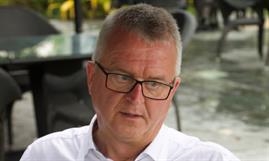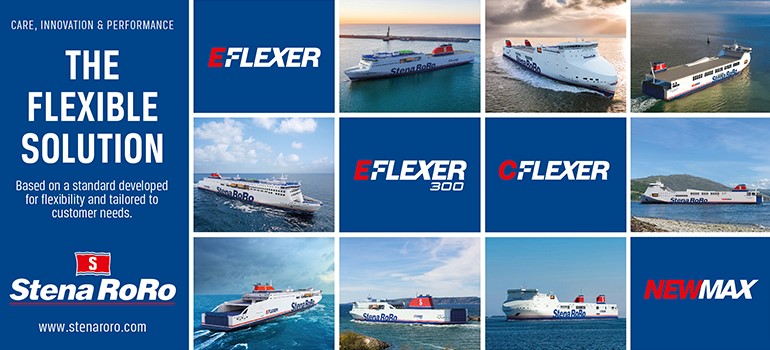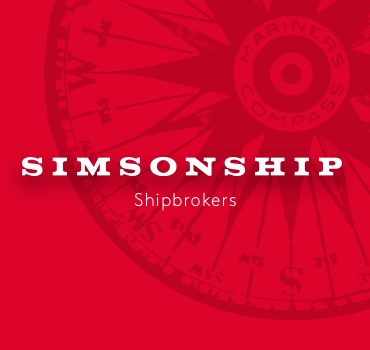
Stéphane Lafaut
STQ – DIAGNOSES, STRATEGIES, AND CHALLENGES OF A GOVERNMENT-RUN FERRY ENTERPRISE
InterviewSociété des Traversiers du Québec (STQ) is a provincial government-owned company. It operates a fleet of 20 ships, ranging from a small seven-metre vessel to a 130-metre ferry, as well as a hovercraft. The company serves 14 links in the Province of Quebec, of which 10 it operates directly and the rest on contracts to private operators. The company will celebrate its 50th anniversary next year, a perfect occasion for Shippax to put a few questions to its CEO, Stéphane Lafaut, relating to aspects of STQ businesses.
Shippax: You were appointed as CEO of Société des Traversiers du Québec a year ago, at first on an interim basis and then on a permanent contract. Can you tell us something about your background leading up to this position and what have you learnt about STQ so far?
Stéphane Lafaut (SLA): Compared to people who have spent their entire career in the maritime industry, I’ve followed an atypical path. I had been an officer in the Canadian Armed Forces for 33 years before deciding, in 2016, that it was time for a change. At that time, I received a call from the Government of Quebec, which offered me the position of Associated Deputy Minister at the Ministry of Transport. It was something completely different from what I had done during my military career. So, I took time to learn about how the government and the public services in general were run in Quebec.
Then, a year ago, the government offered me the CEO position at STQ, which was in crisis at that time. F.-A.-GAUTHIER, the company’s 2015-built flagship, had been put out of operation for several weeks and we did not have all the logistical means required to replace her. Obviously, it’s never pleasant to come in and replace someone as the head of a company in this context, but overall it went well.
The government initially asked me to prepare a diagnostic report on STQ, which I did. First, I carried out my own diagnosis. Then I also called on the service of a specialised firm to help me in the process. After a few months, the report was ready. In terms of specific findings, it showed a lot of positive aspects. It was recognised, for example, that STQ was a company capable of quickly handling operational crises, particularly in regards to the daily management of events, thanks to a team of dedicated and passionate staff.
However, some shortcomings also emerged. Among them, there was a critical shortage of administrative staff. There were enough personnel to manage the vessels and their day-to-day operations, but there was not a sufficient staff level at the company’s headquarters to manage the different administrative processes. In addition, as a government-run company, there was no one from the government sitting on the board. There was indeed a minister responsible for the organisation, but that was not enough to bind the company to the government’s priorities. There was also a lack of proper communication on the daily affairs of STQ.
Finally, the main issue drawn from this diagnosis was related to the company’s process of development throughout its history. STQ was founded by taking over the Quebec City-Lévis route. From that point on, the company grew by adding routes and services in the years that followed. The biggest issue was, therefore, that STQ behaved like a private company that added services year after year instead of being a government-owned enterprise that managed a business as a whole. In addition, there was a need to improve and standardise customer experiences throughout all the services it offered.
Shippax: Is the link STQ has with the government – the policies of which can change from one election to another – an issue, especially in regard to the company’s long-term vision?
SLA: Like in all other government-owned companies in Quebec, I have two bosses: the board of directors (BOD) and the designated minister responsible for STQ. The BOD is composed of nine members. They have different but complementary profiles of skills in HR, accounting, and legal fields, etc. The board meets a few times a year and gives me directives as well as medium- and long-term objectives, based on a strategic plan, to achieve. Parallel to the BOD, there are committees, such as HR and audit, etc., which, in addition to the BOD, closely monitor our activities.
The minister responsible for monitoring STQ on behalf of the provincial government is my second boss. For each government-run company in Quebec, a minister is appointed to monitor its progress. One must remember that the annual contribution to our budget from the government amounts to almost 83%. It’s a public service we offer; as such, the government subsidizes STQ.
The government also dictates a set of general directives, like the greenhouse gas emissions reduction target and so on. As much as possible, STQ must achieve these objectives.
Shippax: You operate 10 services directly, with four others operated by partners. Can you tell us more about the form of partnerships? What are STQ’s prerogatives?
SLA: We have three operating models: 1) STQ operates the crossing, the ship, and supplies the crew; 2) STQ vessel operated by a private partner; and 3) STQ crossing, but vessel and staff from a private partner.
In the three models, we make sure that proper services are offered. I must admit that the approach to customer service is not yet the same everywhere; it is currently not standardised. Standardisation is what we would like to achieve with the transformation plan that I have launched last October. The aim is to standardize all aspects of operations, services, and documentation everywhere in the STQ network.
Shippax: STQ was founded in 1971 by taking over the Quebec City-Lévis service you mentioned earlier, which you still operate to this day, replacing a private operator. Due to the logistical and technical constraints, mainly during the winter, are the services on the St. Lawrence destined to be subject to initiatives and investments from the public authorities?
SLA: I think, for the moment, the system we have in Quebec is the right one. The vast majority of services is provided by the public body because there are huge operating costs involved. STQ’s mission can be described in four points: 1) offering transportation solutions to remote communities and islanders; 2) offering road extension solutions on key national roads; 3) linking regions; and 4) ensuring continuity between two shore-based transportation networks.
Most of our routes are not profitable, but they provide critical public services, which are vital to local communities. Without STQ, some of them would just disappear. Most of our ferry network services is free of charge. Only three or four of the routes have a fare system in place.
For those reasons, the government invests a considerable sum each year to ensure the continuing provisions of services. At the same time, in some cases, there are privately-operated crossings that are of commercial and eco-tourism interests. They serve an objective beyond that of STQ. So, we have a mixture of services across the river and I think this is fine. STQ is not looking to issue new mandates, because we have private partners who already offer good-quality services that are equivalent to those of our own.
Shippax: Some crossings are not offered during the winter. Is it due to the technical deficiencies of the ships to operate on the icy river or is it because the volume of traffic does not justify a year-round service?
SLA: Most of our vessels are built to navigate in ice conditions. They are fitted with reinforced hulls to the same standards as those in Northern Europe. In some cases, there is no need to operate in winter. For example, between Saint-Augustin and Pakuashipi on the Saint-Augustin River, an ice bridge forms in winter. Snowmobiles can be used to connect the two banks. There is no need for a ferry service, as it is the case in the spring, summer, and autumn. It is also the case on the l’Isle-Verte and l’Isle-aux-Grues crossings, where there is no need to operate ferry services in the winter.
We also have one of our partners, a company called Clarke, offering services on the route between Rivière-du-Loup and Saint-Siméon, which stops operation for three months during the winter. Our ships operate on all other St. Lawrence River routes during the winter, including our flagship, F.-A. GAUTHIER.
Shippax: Your 2018-2022 strategic plan aimed for improvements on the following points: 1) review and improve the internal organisation of the company; 2) implementation of an annual maintenance plan for maritime and shore assets; 3) sustain existing digital systems and develop new digital tools for customers; 4) improve the customer experience, improve STQ’s image with the general public; and 5) promote the culture of health and safety. You are halfway to the end of this strategic plan. Are the objectives on track to be achieved?
SLA: I arrived in the company during the first year of execution of the 2018-2022 strategic plan. Because of the changes in circumstances, we decided to modify it. Firstly, because the government of Quebec had asked all of its departments and public bodies to redraw their strategic plans following precise directives and guidelines; secondly, I wanted to re-work the current one.
I did not want to start from scratch, as in the current strategic plan there were good things I wanted to keep. Moreover, STQ has worked hard and made some progress by following the initial plan. However, I wanted to make changes in order to lead STQ to where I wanted it to be.
We are currently working on a new strategic plan, which should be submitted to the government shortly, probably between April and May 2020. Of course, we are looking to the future. I want STQ to be more modern, to be a successful public service company, with a sharper focus on the customers. For this reason, we will implement better use of digital tools for customer services, for instance, with improved online ticket purchase provisions, a new design for our website, and real-time monitoring of the service status, etc.
Shippax: Your flagship, F.-A.-GAUTHIER, faced major technical problems from December 2018 to January 2020. Can you give us more details concerning these problems?
SLA: In December 2018, F.-A.-GAUTHIER was subjected to a planned two-day maintenance. There had been vibration issues during routine operations and we wanted to know why. When the condition of the azimuth propulsors was checked, it was found that they were no longer fit for purpose. The ship was then towed to Davie Shipyard in Lévis where she underwent a complete examination process by the builder, our own specialists, and the classification society. We found that all the gear systems and ball bearings were worn down; the metal had deteriorated. For months, we continued to investigate the causes to the problems with our partners. The manufacturer had a complete kit to reassemble one of the thrusters. But it was necessary to machine a new one to replace the other thruster. This process lasted a total of six months. In the summer of 2019, a diagnosis was carried out on what had happened: foreign metallic bodies were found in the thrusters. It had resulted in a gradual deterioration of the mechanism, the condition of which had worsened over time. In 2020, the ship’s mandatory five-yearly SOLAS inspection was due. I asked my team to carry out the maintenance work planned for the following year a year earlier, in 2019 instead, while the thrusters were being replaced. The ship returned to service on 26 January 2020. Putting a ship back in operation after a year of repairs was very challenging, but we managed it.
Shippax: The problems with F.-A.-GAUTHIER had led to the decision to purchase the 1970-built APOLLO and the 2010-built SAAREMAA I as replacements, as well as occasional charters from CTMA, a Canadian shipowner. The APOLLO will be sunk and made into an artificial reef. What will be the fate of SAAREMAA I now that F.-A.-GAUTHIER has come back to service?
SLA: Regarding APOLLO, some people from the communities of Godbout and Baie-Comeau asked us to do something positive for the economy. We had a choice: we could send her for recycling or, for the same amount invest, turn her into a reef, thus participate in the economic development of the communities that had been affected by the temporary withdrawal of the F.-A.-GAUTHIER. We obviously chose the second option. We sold them the APOLLO for a symbolic dollar and agreed to contribute, up to a limit of CAD 2 million, to the preparation of the ship to turn her into a reef.
As for the SAAREMAA I, when I took over as the CEO, the government asked me to quickly find a recent, good capacity relief vessel that would not be moored alongside eleven months a year and could be used on another crossing. Before arriving at STQ, my team had already started to identify some leads. There were specific templates, features, and technical particulars we were looking for. Above all, the chosen vessel had to be ready to take over from F.-A.-GAUTHIER in the spring or summer of 2019. The SAAREMAA I was one of the available ships meeting our criteria and we bought her for CAD 39 million. In addition to being a spare ship, our current intention is to deploy her on the crossing between Rivière-du-Loup and Saint-Siméon in the future. We currently have a service contract, which lasts until 2022, with Clarke, which operates the 2,173-gross-ton, 1963-built TRANS-ST-LAURENT on this route. We want to improve the service on this crossing. SAAREMAA I is thus much welcomed, because she is bigger than TRANS-ST-LAURENT. In the meantime, adjustments to the docks and wharves will need to be carried out in order to enable SAAREMAA I to realise her full potentials. We are currently analysing the modifications that would be necessary on the infrastructures.
We still have a lot to do on board the vessel. Initially there was a deadline set for 31 December 2019 to get the ship compliant with the Canadian national regulation. Extra time was granted to complete this work, which included the addition of a davit as well as the inspection and upgrade of the firefighting system. This was completed before 31 January 2020. The ship is currently moored alongside in Trois-Rivières where further adjustments are still being made. In the coming months, we except to finalise her ‘Canadization’ process. Her entire electrical system, for example, is based on the European standards. So, we have to change it to the North American standards. A compulsory drydocking is also planned for this summer. This will also be an opportunity to update her livery to the STQ ones. Also, we will probably rename her. When an STQ ship is deployed in a region, local communities are asked to suggest a new name of the ship, a name relating either to a major local event or someone who made history there. So, when she is finally assigned to a service, we will ask the local communities to suggest a name.
Shippax: STQ started an energy transition in 2015 with the delivery of the 15,901-gross-ton F.-A.-GAUTHIER and the deliveries of the 2,903-gross-ton sister vessels JOS-DESCHÊNES II and ARMAND-IMBEAU II in 2018. All three ships are powered by dual fuel engines (MDO-LNG). Most of the crossings you operate are of durations shorter than 30 minutes, ideal lengths for deploying low-to-zero-emission vessels. Have you a plan to renew the fleet or even retrofit existing vessels with such power sources as LNG, batteries, or hydrogen? Is there a specific STQ-preferred choice of propulsion technology?
SLA: STQ has always been a pioneer in the use of new technologies. F.-A.- GAUTHIER was the first LNG-powered vessel in North America. With the two ships in Tadoussac, JOS-DESCHÊNES II and ARMAND-IMBEAU II, we used the same technology, and we are happy with the technical performance results of all three vessels. We also have a diesel-electric hybrid ship, PETER FRASER, which sails to l’Isle-Verte.
From a technological point of view, for the time being, we are in an active observation phase, watching the developments abroad in the next few years. We have an incredible hydroelectric-generation capability in the province of Quebec. So, we will be looking at what is being done with electricity. The progress made over the past five years in electric cars is impressive. And I know that in Europe there are also big improvements made in the use of electricity for the propulsion of ships. The challenge for us would be to be able to quickly recharge the ships’ batteries. I am convinced we will find effective solutions in the next five to ten years.
We have mid-life updates scheduled for some ships in our fleet in the next ten years. During 2021-22 we will work on a major overhaul of the 1989-built JOSEPH-SAVARD. For this specific ship, we will keep the diesel propulsion, but we will replace the existing engines with more fuel-efficient ones. Even for internal combustion engines we see that today there are more modern, economical, and environmentally friendlier solutions.
Shippax: STQ has faced difficulties in recruiting seagoing personnel in recent years. How is the situation evolving?
SLA: This is a problem faced by all provinces in Canada, particularly in Quebec because the working language for companies here is French, which reduces the size of potential talent pool. There is almost full employment in Quebec Province where the unemployment rate currently stands at 5.3%.
We are working with our partners on the federal and provincial levels, as well as with the Canadian Ferry Association, in an effort to find a way validating seafaring qualifications granted by other countries, especially the European ones. We would like to find people who are interested in coming to work with us in Quebec.
Among Canadian shipping companies, staff are often exchanged with respect to their preferences in terms of conditions of employment.
In conclusion, I’d like to stress the fact that, despite being new to the maritime industry, I enjoy working at STQ. We have an efficient team. We want to capitalise on our strengths and strive for further improvement.
The next few years will be both challenging and exciting for us.
© Shippax / Bruno Jonathan
apr 01 2020
Most read
HD Hyundai Heavy Industries’s HiMSEN engine stable to operate on ethanol fuel
jan 05 2026
Tallink 2025: Passenger numbers remained stable
jan 05 2026




















